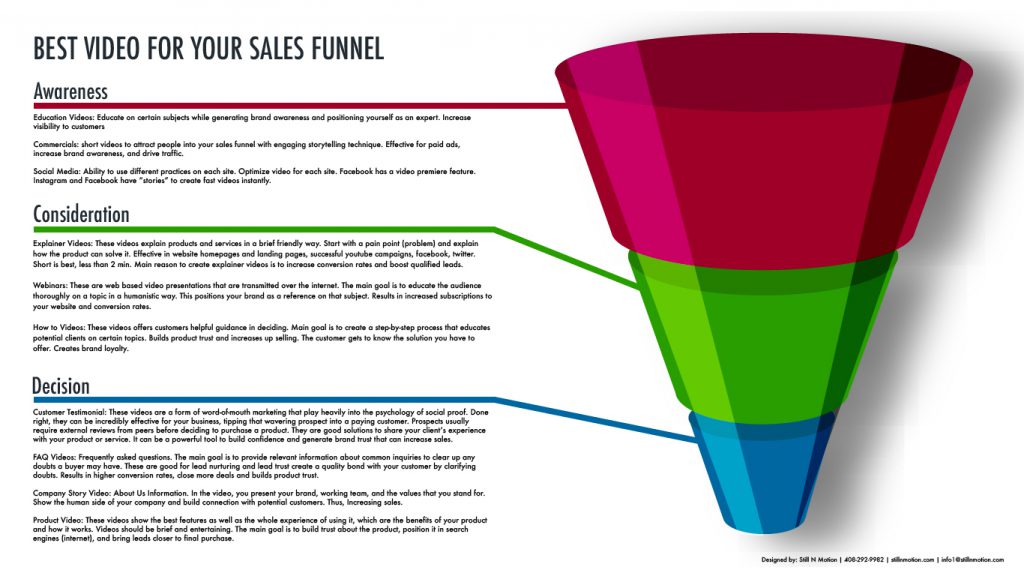The definition of the sales funnel (also known as a revenue funnel or sales process) refers to the buying process that companies lead customers through when purchasing products. A sales funnel is divided into several steps, which differ depending on the particular sales model.
3 Step Sales Funnel
Awareness stage = customer realizes that he or she has a potential problem that needs to be solved. This is where potential customers have a chance to answer questions and guide them while you position your brand as a reference in the subject. You have one impression for them to engage in your brand.
Consideration stage = customer starts to do research on how to solve the problem and evaluates the options for a solution. This is when you provide education for the customer about solutions to their specific needs. The goal here is to help customers in their research by showing them the best solution to their needs.
Decision stage = customer decides which company to purchase a product or service. This stage is all about trust with your brand or product.

Best Types of Video for Each Stage
Awareness Stage:
Education Videos: Educate on certain subjects while generating brand awareness and positioning yourself as an expert. Increase visibility to customers.
Commercials: short videos to attract people into your sales funnel with engaging storytelling technique. Effective for paid ads, increase brand awareness, and drive traffic.
Social Media: Ability to use different practices on each site. Optimize video for each site. Facebook has a video premiere feature. Instagram and Facebook have “stories” to create fast videos instantly.
Consideration Stage
Explainer Videos: These videos explain products and services in a brief friendly way. Start with a pain point (problem) and explain how the product can solve it. Effective in website homepages and landing pages, successful youtube campaigns, facebook, twitter. Short is best, less than 2 min. Main reason to create explainer videos is to increase conversion rates and boost qualified leads.
Webinars: These are web based video presentation that is transmitted over the internet. The main goal is to educate the audience thoroughly on a topic in a humanistic way. This positions your brand as a reference on that subject. Results in increased subscriptions to your website and conversion rates.
How to Videos: These videos offers customers helpful guidance in deciding. Main goal is to create a step-by-step process that educates potential clients on certain topics. Builds product trust and increases up selling (selling additional products or better version of product/service). The customer gets to know the solution you have to offer. Creates brand loyalty.
Decision Stage
Customer Testimonial: These videos are a form of word-of-mouth marketing that play heavily into the psychology of social proof. Done right, they can be incredibly effective for your business, tipping that wavering prospect into a paying customer. Prospects usually require external reviews from peers before deciding to purchase a product. They are good solutions to share your client’s experience with your product or service. It can be a powerful tool to build confidence and generate brand trust that can increase sales.
FAQ Videos: Frequently asked questions. The main goal is to provide relevant information about common inquiries to clear up any doubts a buyer may have. These are good for lead nurturing and lead trust create a quality bond with your customer by clarifying doubts. Results in higher conversion rates, close more deals and builds product trust.
Company Story Video: About Us Information. In the video, you present your brand, working team, and the values that you stand for. Show the human side of your company and build connection with potential customers. Thus, Increasing sales.
Product Video: These videos show the best features as well as the whole experience of using it, which are the benefits of your product and how it works. Videos should be brief and entertaining. The main goal is to build trust about the product, position it in search engines (internet), and bring leads closer to final purchase.
For more information view our information on video strategy.